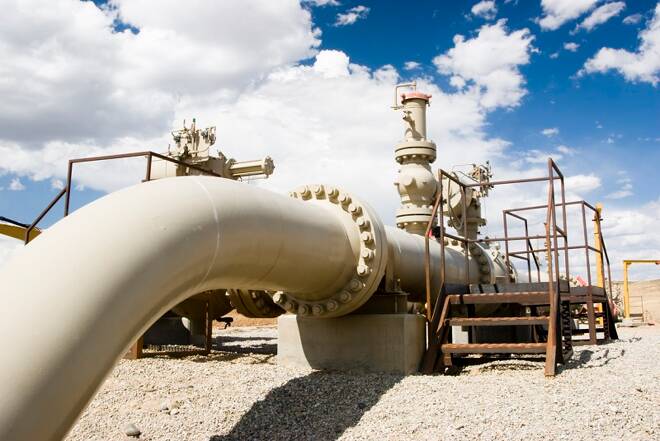Advertisement
Advertisement
Natural Gas Price Fundamental Daily Forecast – Seasonality Shift Causing Heightened Volatility
By:
We’re at a critical point in the year where volatility can increase due to seasonality shifts. With the summer cooling season winding down, traders start to prepare for the winter heating season starting around September 1.
Natural gas futures are edging lower early Friday after posting impressive gains in heat related activity. However, gains were likely capped by a dip in spot gas prices.
“Recent strength in the cash market helped prop up NYMEX futures for much of the week, but speculative traders that had notched a record number of short positions earlier in the month remained in the driver’s seat even as cash prices retreated on Thursday,” according to Natural Gas Intelligence.
At 09:05 GMT, October natural gas futures are trading $2.280, down $0.016 or -0.70%.
Technical chart factors and the rollover to the October futures contract continue to be the main focus for traders although they are keeping an eye on Hurricane Dorian.
Despite the bearish chart pattern and fundamentals, prices soared on Thursday after weak short aggressively covered positions when $2.226 failed to hold as resistance. This also occurred to some extent when $2.273 and $2.278 were breached.
Traders are still trying to figure out what the record number of shorts are going to do now that the September futures contract is off the board.
Aggressive short sellers could rollover positions into the October futures contract, while hoping for further downside pressure. They could continue to cover, while hoping to re-enter at more favorable price levels or they could just buy it all back ahead of the seasonality shift to bullish conditions, which usually start around September 1.
U.S. Energy Information Administration Weekly Storage Report
Thursday’s EIA report was bearish on paper, but that didn’t prevent the huge short-covering rally. The EIA reported a number that was on the high end of the estimates. The EIA reported a 60 Bcf injection but a few Bcf above the five-year average of 57 Bcf, according to the government.
Total working gas in storage as of August 23 stood at 2,857 Bcf, 363 Bcf higher than last year and 100 Bcf below the five-year average.
Short-Term Weather Outlook
According to NatGasWeather for August 29 to September 5, “Comfortable conditions will continue across the Midwest, Northeast and Mid-Atlantic regions due to weather system with showers and cooling for light demand. The West into Texas will be hot with highs of 90s and 100s as high pressure rules for strong regional demand.”
“Tropical storm Dorian will bring rains to Florida and portions of the Southeast Sunday through Tuesday, while high pressure will expand across much of the country Tuesday through Wednesday for a minor bump in national demand, although cooling off again late in the week.”
“Overall, national demand will be moderate to low across the central and northern US but high over the West into Texas.”
Hurricane Update
Hurricane Dorian remained a threat for Florida as it barreled across the Caribbean, dumping heavy rains and slashing demand. Bespoke Weather Services said, “For now, Dorian remains mostly a Florida threat Sunday night into Monday, with any impacts seen as bearish for the market due to cloud cover and power outages. Duke Energy said it expects damage to its infrastructure that may result in extended power outages.
Daily Forecast
We’re at a critical point in the year where volatility can increase due to seasonality shifts. With the summer cooling season winding down, traders start to prepare for the winter heating season starting around September 1. Most of the price action is likely to be determined by what the massive amount of short-sellers decide to do with their positions. Like I said earlier, they can continue to press the market lower, or start taking profits and lifting shorts. This can produce periodic rallies.
As far as Hurricane Dorian is concerned, if it stays in Florida then look for lower demand. If it crosses into the Gulf of Mexico and re-strengthens then it will pose a threat to natural gas production outside of Louisiana and Texas. This would be a potentially bullish event.
About the Author
James Hyerczykauthor
James is a Florida-based technical analyst, market researcher, educator and trader with 35+ years of experience. He is an expert in the area of patterns, price and time analysis as it applies to futures, Forex, and stocks.
Did you find this article useful?
Latest news and analysis
Advertisement
